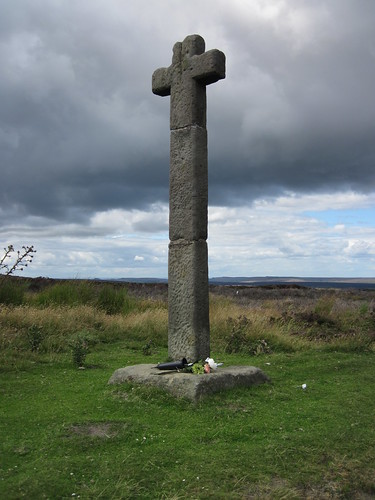Legend has it that Ovin give up a position in the household of Queen Ethelrid to join the monastery at Lastingham in the 7th century and arrived carrying an axe and hatchet.

The current well surround is thought to be 18th Century, although the original well much older. Sadly all that remains is a stone recess with no trough or spout.
St Ovins Well, Lastingham
 Show on map
Show on map 

















